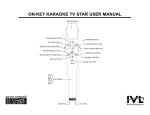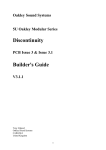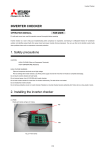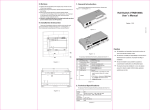Transcript
USER GUIDE IVL V1.0 (14.10.2014) 1 (1) MOUNTING 1. Select a suitable installation location. The device installation location should be chosen with care. All error factors which affect to the measurements must be prevented as well as possible. The installation location should also provide easy access for maintenance tasks. IMPORTANT: Remove the device while sweeping the duct. The air velocity measurement should be done where the velocity profile is fairly symmetrical, stable and without swirl. The following figure illustrates minimum duct discontinuity point distances as a rule of thumb. However, depending on the application, the distances can also be shorter. Round ducts: D = duct diameter Rectangular ducts: D = 2 x (H x W) / (H + W) H = duct height and W = duct width. NOTE: If the minimum distances cannot be achieved, the correct measuring point can be defined by trying different immersion depths. 2. Drill a Ø10 mm hole to the ventilation duct. 3. Fit the flange on the duct with two screws. 4. Push the measuring probe through the flange. IMPORTANT: To protect the sensitive sensor head, push the probe carefully. 5. Adjust the measuring point to the correct depth. The correct position for the sensor head is in the maximum velocity area, normally in the centre of the duct. 6. Tighten the locking screw. WIRING Device wiring and commissioning can only be carried out by qualified professionals. Always make the wirings while the power is switched off. SELECTING OUTPUT SIGNAL 4…20 mA *0…10 V OUT1 OUT2 * = factory setting MAINTENANCE To ensure the measurement accuracy, clean the sensor head regularly with mild detergent. The cleaning interval depends on the air cleanliness.





